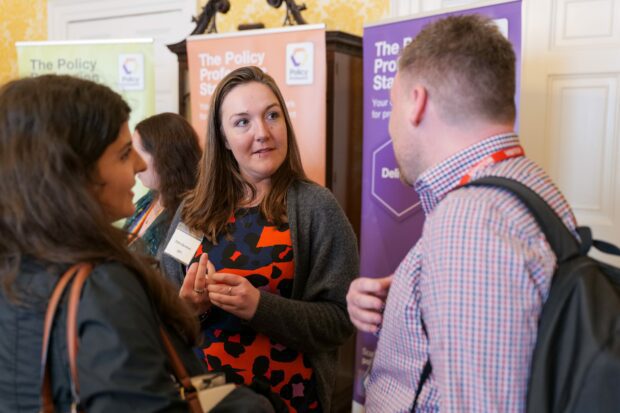
2022 is a landmark year for public policy design. For the first time ever the UK’s government and universities are sponsoring major networks that champion design as key for making policy and services that drive outstanding public value. These new networks are joining up to create an innovative new partnership that bonds theory and practice to identify opportunities, state the case for public policy design and make it even more effective while also acknowledging limitations.
Public policy design has been gathering momentum in both governments and universities over the past 10 years. Most of the UK’s big departments of state now have some policy design capability, and many universities now teach and research public policy design. Growth and demand are expected to continue as officials and researchers around the world strive to find better ways to lever more value from public investments within increasingly complex environments.
Joining theory and practice
There is an established field of academic research known as ‘policy design’ in studies of public administration and political science. Milestone books by researchers such as Guy Peters, Michael Howlett and Paul Cairney map traditional ideas about how to make policy (e.g. policy cycles) whilst recognising that these idealised models are rarely used in practice. What’s new over the past decade is a growing interest in and practical experimentation with professional design in public policy and services, mapped out by Christian Bason, alongside perspectives from political science on co-production for example by Catherine Durose and Liz Richardson.
Design has a long tradition of creativity with an emphasis on materials, aesthetics and co-design, and a focus on the experiences of people who use the resulting products and services. Government can also harness these advantages alongside its existing strengths in making sense of the world and its multidisciplinarity. Combining design with established traditions in policymaking offers a way to make balanced and informed trade-offs between political intent, what is possible and plausible within a system, while envisioning alternatives and paying attention to what is meaningful to citizens.
Scaling up policy design
This momentum is being recognised and it is now time for public policy design to mature and scale up.
The UK Government is now sponsoring the Policy Design Community for the first time ever. Sponsorship is provided by the Policy Profession who are funded by central government to support over 30,000 policymakers in the UK. The Policy Design Community is a multidisciplinary community of practice for people who work in central and local government that currently welcomes people from over 40 public sector organisations. It aims to connect public policy design practitioners to work and learn together, develop next practice, advocate for and embed design, and bring new talent into government. You can read about plans for this year in our New strategy for policy design.
The new Design and Policy Network is funded by the Arts and Humanities Research Council and is based jointly at the University of the Arts London and in the politics department at the University of Manchester. It aims to map out the intersections between design and political science for future research, knowledge exchange and collaboration, and make recommendations for academic funders and institutions (like UK Research and Innovation) and others – who might include government. It brings together different branches of academia from design, the humanities and political science, with experts from the private sector and public servants working in different contexts. The network will examine a number of issues over the coming 18-months, including tensions and resistance, as well as opportunities when combining design and political science and intersections with democracy.
Working here together
Through collaboration, we hope to significantly improve the dialogue between governments and universities on public policy design. We want to create a joined-up understanding on the value of public policy design and how to do it. And we expect this to result in more people being funded to develop knowledge and understanding, develop skills and practice public policy design.
The AHRC Design and Policy Network welcomes participants to its first workshop on ‘Tensions and resistance’ on Wednesday 15 June at 12-2pm (at UAL London/online) which will include invited provocations from three speakers: Professor Paul Cairney (University of Stirling), Dr Carla Groom (Deputy Director for Behavioural Science, Department for Work & Pensions) and Professor Ann Light (University of Sussex/ Malmo University). To find out more and book a place see: AHRC Design and Policy Network Workshop: Tensions and Resistance
During 2022 and 2023, our two communities will provide opportunities for researchers, PhD students and practitioners in both government and university communities to meet, share ideas and work together. As a clear demonstration of solidarity and openness, both communities will now use this Public Policy Design Blog to share their thinking and to showcase their work. This means future content on this blog will also include posts from academic experts on public policy design including researchers from political science, the humanities and studies of design, as well as government design practitioners. Closer connections between research, practice and policy making are essential to understanding and responding to today’s public challenges. The collaborations made public in this blog will, we hope, consolidate and amplify important learning for wider benefit.
You can join the network at Design and Policy Network.
1 comment
Comment by john mortimer posted on
Great to see this collaboration happening.